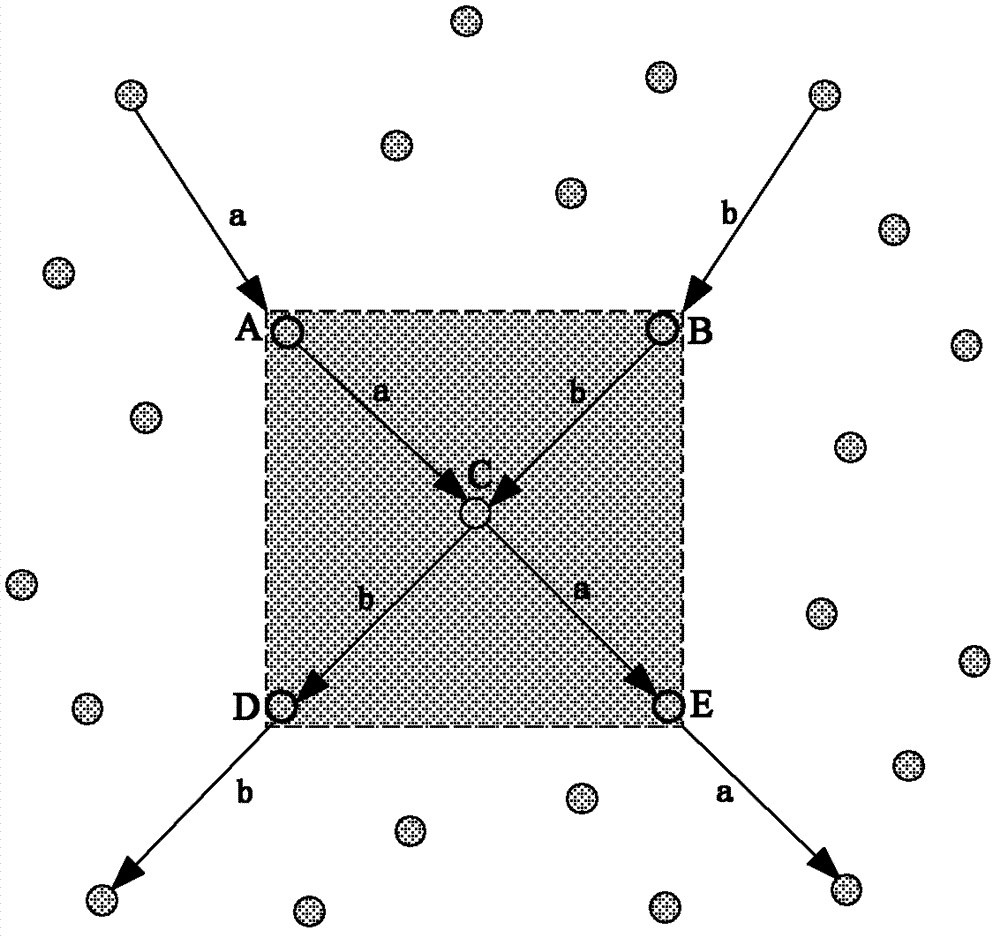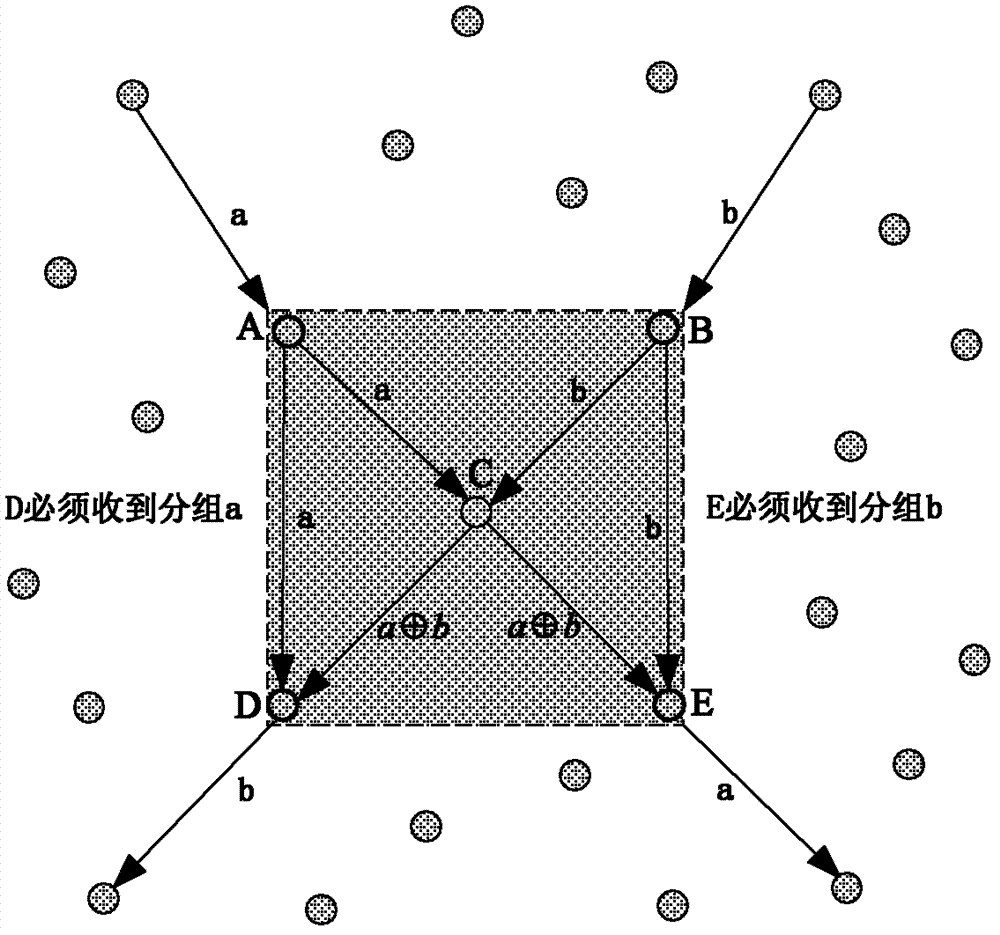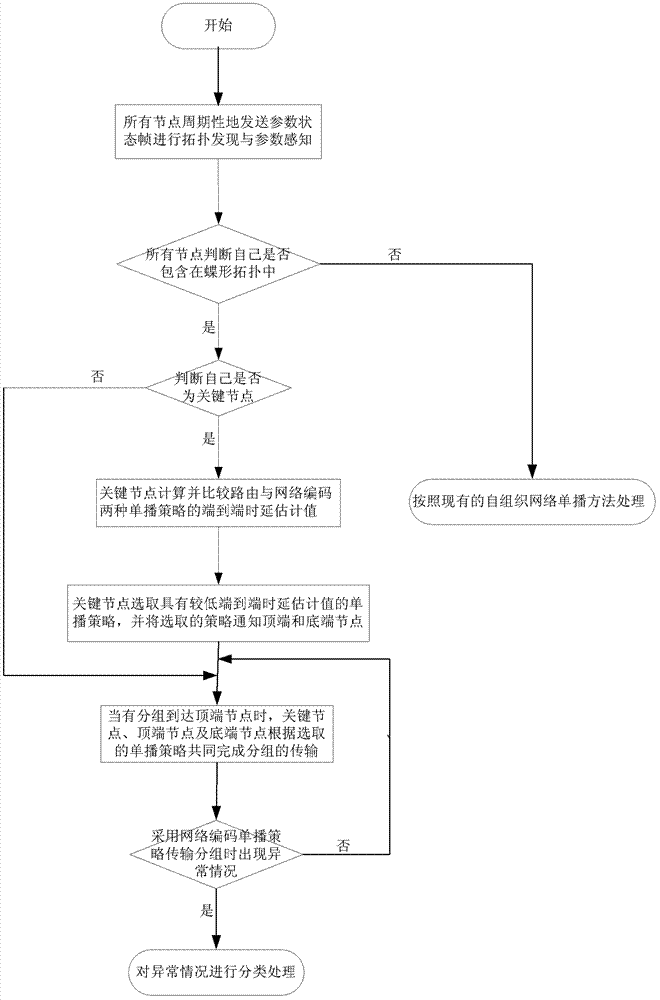Self-organizing network unicast method with combination of cognitive network coding and routing based on cognition
A self-organizing network and network coding technology, applied in the field of unicast, can solve problems such as large end-to-end delay, decreased network throughput, and does not consider dynamic changes in the network topology of the organization, so as to improve the carrying capacity and reduce overhead. Effect
- Summary
- Abstract
- Description
- Claims
- Application Information
AI Technical Summary
Problems solved by technology
Method used
Image
Examples
Embodiment Construction
[0038] The technical solutions of the present invention will be described in further detail below with reference to the accompanying drawings and embodiments.
[0039] The application scenarios of the present invention are as figure 1 with figure 2 In the butterfly topology shown, node A at the upper left of the butterfly topology and node B at the upper right are called top nodes, node C at the intersection of links AC and BC is a key node, and nodes at the lower left of the butterfly topology D and the node E on the lower right are called bottom nodes. Top node A unicasts packet a to bottom node E, and top node B unicasts packet b to bottom node D. Due to the limited transmission range, both packets a and b pass through key node C. Obviously, network coding can be performed at the key node C. Here, the encoding operation time at the key node C and the decoding operation time at the bottom nodes D and E are ignored.
[0040] In order to simplify the implementation steps...
PUM
 Login to View More
Login to View More Abstract
Description
Claims
Application Information
 Login to View More
Login to View More - R&D
- Intellectual Property
- Life Sciences
- Materials
- Tech Scout
- Unparalleled Data Quality
- Higher Quality Content
- 60% Fewer Hallucinations
Browse by: Latest US Patents, China's latest patents, Technical Efficacy Thesaurus, Application Domain, Technology Topic, Popular Technical Reports.
© 2025 PatSnap. All rights reserved.Legal|Privacy policy|Modern Slavery Act Transparency Statement|Sitemap|About US| Contact US: help@patsnap.com



